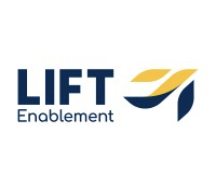 I had a revelation of sorts this past week: I spend far too much time and emotional energy trying to make clients happy. I put a lot - and I mean a lot - of stock in what people think about me, and that’s not particularly helpful when you’re being counted on to avoid projects getting sidetracked into unending rabbit holes.
I had a revelation of sorts this past week: I spend far too much time and emotional energy trying to make clients happy. I put a lot - and I mean a lot - of stock in what people think about me, and that’s not particularly helpful when you’re being counted on to avoid projects getting sidetracked into unending rabbit holes.
“But Dan, you’re a consultant. Aren’t you supposed to be making clients happy? Doesn’t their thinking you’re smart and driven lead to more projects down the road?”
Well, no. Not really. Happy customers are friendly and nice to you. The customers who come back and pay for your services again and again are the successful ones, and the successful ones often think you’re kind of a jerk – at least until they understand that your job is to stand firm to ensure the efforts they do make pay off.
I’ll give an example from my past life as an in-house marketer: when Facebook first opened up to companies (in the Stone Age of digital marketing), my CTO wanted 100,000 followers on our Facebook page. Current me would have pushed back, looking for a reason the 100,000 followers would make a lick of difference to our growth, but at the time, I wasn’t trying to make us successful. I was trying to make my CTO (my client) happy.
So I built an ad campaign, pulled some levers, and over a surprisingly short period of time, I had gotten us over 100,000 followers. My CTO was happy. However, the 100,000 followers were worth absolutely nothing to our business. They weren’t the right followers. They couldn’t expand our client base.
What did I do wrong? I conflated making my client (the CTO) happy with making our business successful. I neglected what Doug calls the “Blue Work” - that is, peeling back the “why” of generating 100,000 Facebook followers, asking if that follower count would actually accomplish it, and developing a detailed, strategic approach to accomplishing the real goal.
At the end of the day, what I needed to do was add web publishers to our network. I wanted to build awareness among the web publishing community, develop a channel I could drive insights and information to, and create a pipeline of publishers consistently engaging with us across their buyer’s journey.
Today, I would have pushed back on the request, and doing that as an internal marketing lead should be the same as I would do as a consultant. And that’s where the difference between happy and successful comes in - clients often will come to you asking you to perform a task. Launch an ad campaign, build a landing page, create a targeting list - these are all things that clients ask for. But they’re clients because they think that I, and by extension Imagine, have expertise in sales and marketing process (which we do). So what value do we provide simply by performing the task requested?
Performing the task will make the client happy… for now. But unless that task ties into a real business strategy that positively affects their business growth, that happiness won’t lead to success - theirs, or yours. The happiest client who has gotten quick response from you on every task requested will drop you without a second thought if their growth stalls. The unhappiest client who hates how you push back and drive to the “why” will keep adding projects as long as they’re seeing consistent sales and marketing growth.
I’ll end this rant of sorts with the advice I wish I could give my younger self: say no. Ask why. Never lose sight of the business goals and processes. If you’re asked to generate 100,000 Facebook followers, remember, 100,000 Facebook followers doesn’t mean 100,000 sales. Or leads. Or even people remotely interested in or relevant to your business.
Whether you’re an in-house marketer or a consultant, never lose sight of the “why.” And never let contentious debates push you into the fool’s errand of making a client (or your CTO) happy instead of successful.

 Lift Enablement
Lift Enablement
